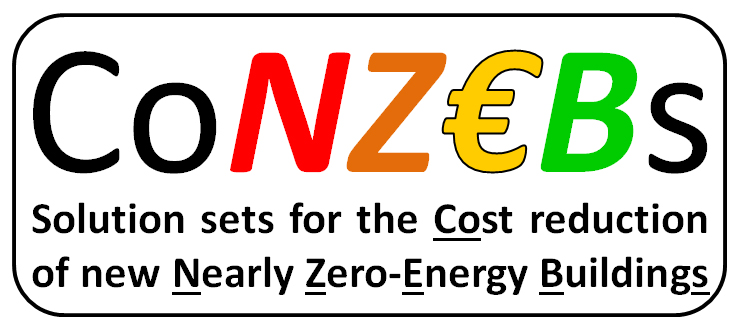The CoNZEBs team has completed a follow-up activity to the identification of potential technical solution sets that could reduce investment costs for NZEBs. The scientific partners have carried out life-cycle cost (LCC) and life-cycle environmental impact analyses (LCA) of the identified technical solution sets to reach NZEB and beyond NZEB levels for new multi-family buildings in the four European countries (Denmark, Germany, Slovenia and Italy).
The overall results of the many analyses carried out in this work indicate that a balance point between energy saving measures and renewable energy (solar) supply has been reached. In other words, the LCC and LCA results show that both for economic and environmental reasons in most countries and climates it pays off not to further increase insulation levels and instead introduce solar (mainly PV) systems for Nearly Zero-Energy Buildings.
Reductions of global warming potentials (GWP) and non-renewable primary energy (NR-PE) are difficult to comprehend; in the report we try to illustrate the importance by comparing to:
- the GWP and NR-PE due to the embedded energy in constructing new NZEB buildings in Denmark,
- the emissions from different transportations means and
- the CO2-reductions from planting trees.
As the GWP- and NR-PE factors of the different countries are so varied it is meaningful only to compare the results of the Danish LCA analysis to those from new constructions in Denmark. The GWP reductions of the beyond NZEB building compared to the minimum EP in Denmark are of the same size as that from the embedded energy in the construction (incl. the technical building systems).
The next comparison is to the GWP of different transportation means. This comparison shows that the annual GWP reductions from the Danish beyond NZEB example corresponds to 6,369 person-km in a fossil fuel car.
The third comparison is to the growing of trees. The CO2eq./m² reductions of the Danish beyond NZEB house over 30 years could also have been obtained by increasing the forest area by 764 m² of forest for the same 30 years.
Looking at the LCC results, they show large variations. From 30 year net present value savings of about 100 €/m² (20 €/month for an apartment of 80 m²) to no additional costs.
Read more about the results for Germany, Italy and Slovenia in the full report.
CoNZEBs is assessing the identified technical NZEB solution sets not only concerning their investment costs but also with respect to life cycle costs (LCC) and life cycle (environmental) impacts (LCA). The evaluation is being made with the tool ASCOT_LCA which was also used in the IEA EBC Annex 56.
The results will be documented in a public report “Report on the life-cycle assessment of regular new multi-family houses, regular NZEBs and NZEBs using the solution sets detected in the project”.

